| the 2008 Pumpkin Regatta Fanshawe YC * London, ON * October 4-5 Race 1.13 photos by Bob Steer, Steve Currie and Paul Chesman ... |
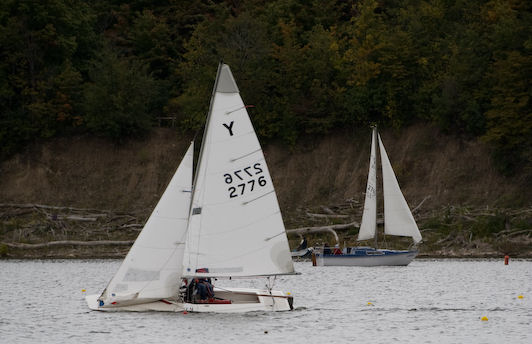 |
| Pierre Dignard zips towards his
4th-place finish on a great starboard lift. ... |
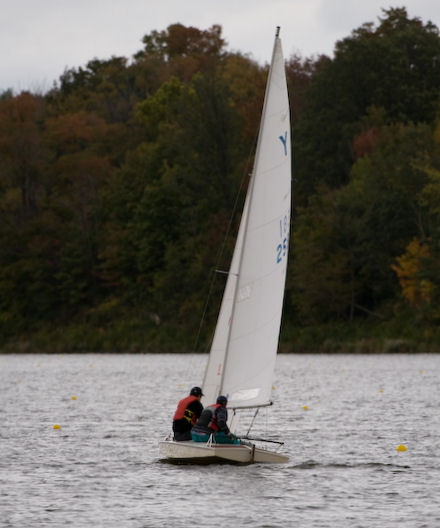 |
| Kevin and Nathalie are about to
finish 5th in Y's. ... |
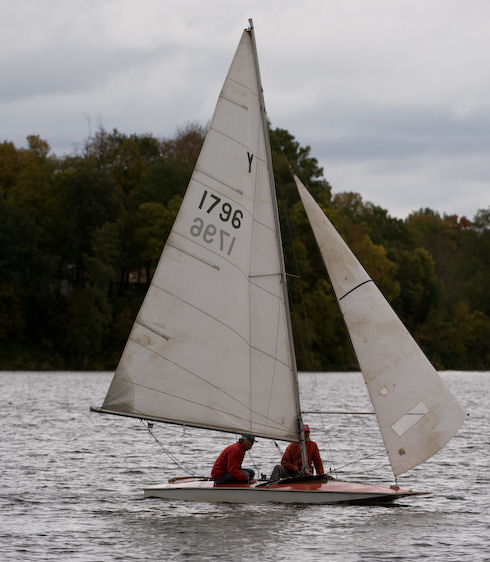 |
| Still finishing their run are ... ... |
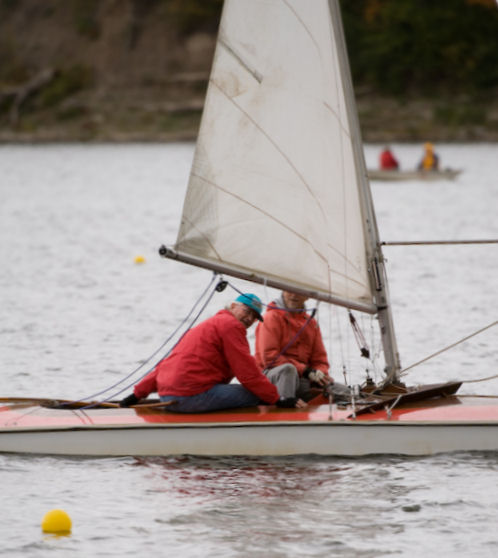 |
| ... Jack Blocker and Colin Read. ... |
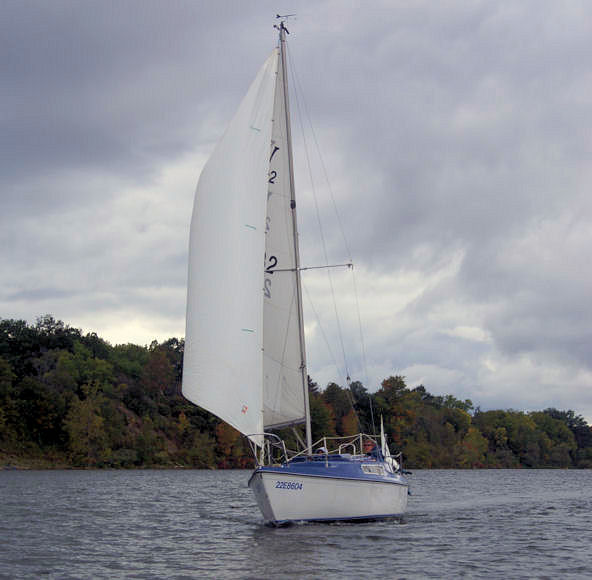 |
| Coming south from #4 towards the
Race Hut are ... ... |
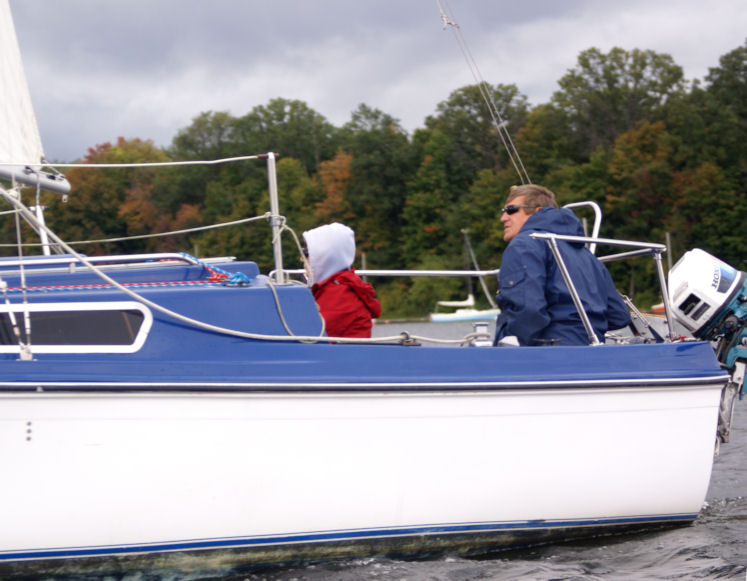 |
| ... Roy and Bobby. ... |
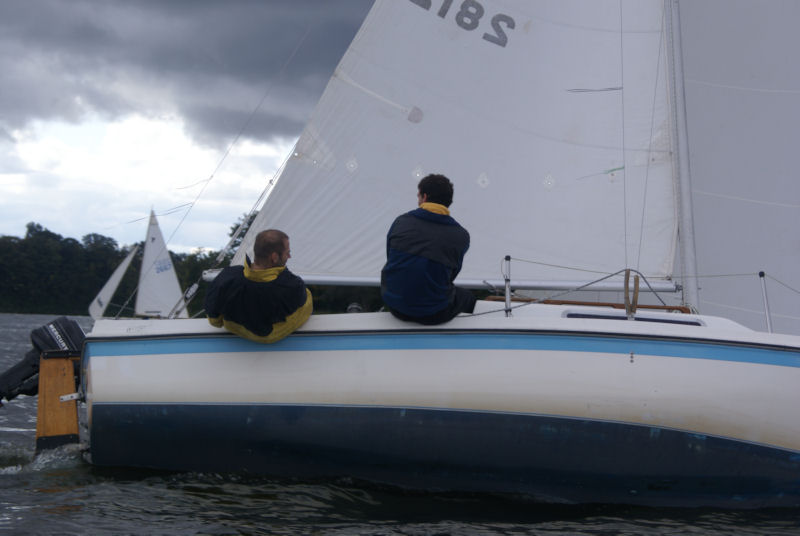 |
| Peter and John working hard on
their way to first in the Open Fleet which, I believe, only does one
lap. ... |
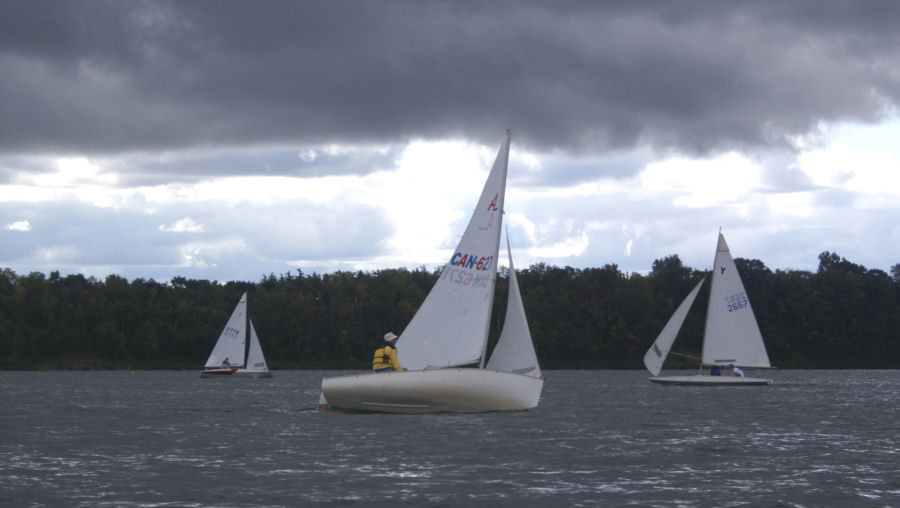 |
| Mark Anderson heads his Albacore
towards the moorings after rounding #1. He will take the Open 2nd. ... |
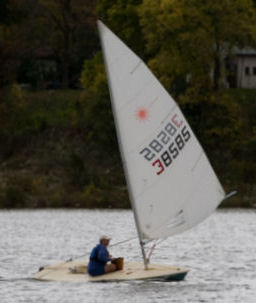 |
| Rick Goldt on his 2nd run ... ... |
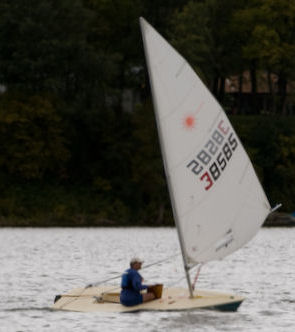 |
| ... from #4 to #2 ... |
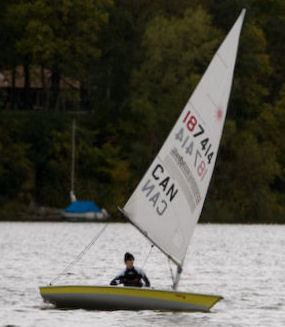 |
|
Kevin in fine form. Note how
the Lasers heel their boats to windward on the run to keep the Centre
of Effort directly aligned with the boat's Centre of Resistance. This
avoids weather helm. To understand this, lay a small ruler on a table
and then put the fingers of one hand on one side of the ruler and hold
them steady. These fingers can now represent the force of the water
resisting the hull's forward progress. Meanwhile the sail is pushing in
the opposite direction, so use the fingers of your other hand to push
against the ruler from the other side. If you place the sail force
fingers off to one side or the other of the resistance fingers, the
ruler will rotate, but if you line up the two sets of fingers exactly
opposite each other, the ruler won't swivel. If you sail a one-sail
boat such as a Laser dead flat on a run, the sail push will be
somewhere off to leeward of the hull and its resistance - and the boat
will want to turn to windward (weather helm), which is why the boat
above is heeled so that the sail force moves to an area directly above
the hull resistance. Your rudder tells you how much heel you need: when
the weather helm disappears, you're heeled enough.
...
|
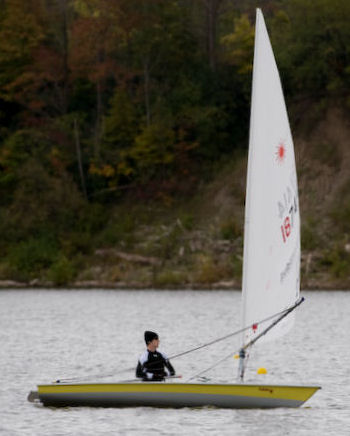 |
| More examples ... ... |
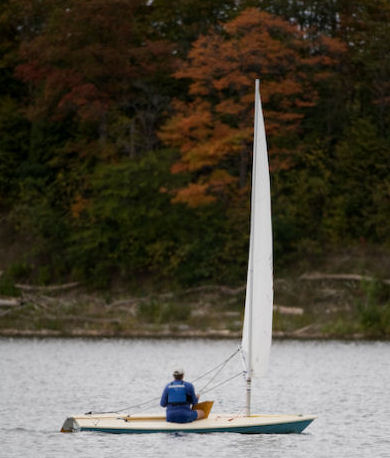 |
| ... of the .... ... |
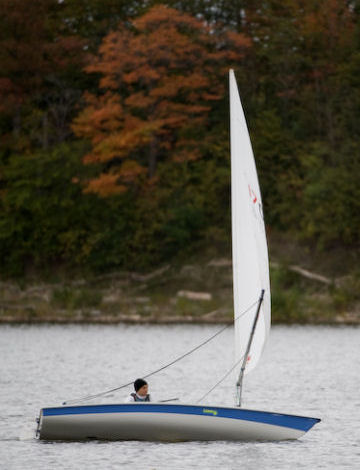 |
| ... same technique. ... |
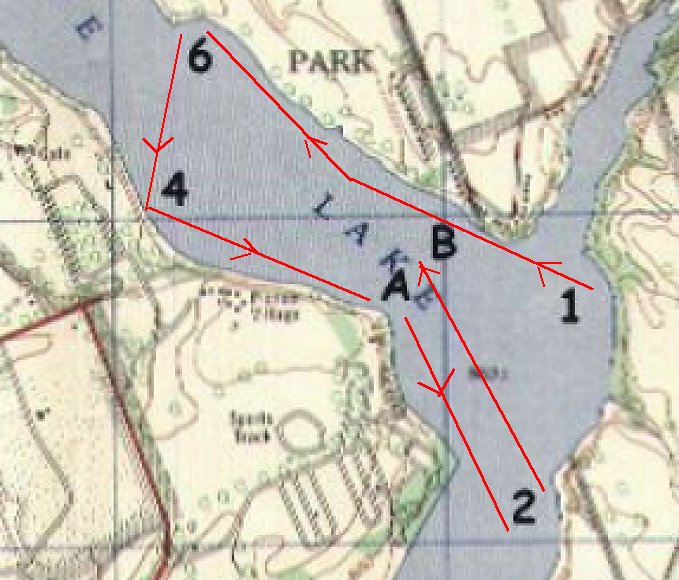 |
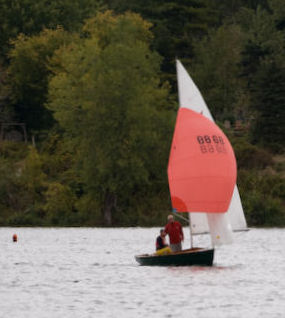 |
| As he passes A-B on his second
run, Al does the same thing to a lesser degree since, with the spi pulling, his overall sail force is only marginally to leeward of the hull's resistance. ... |
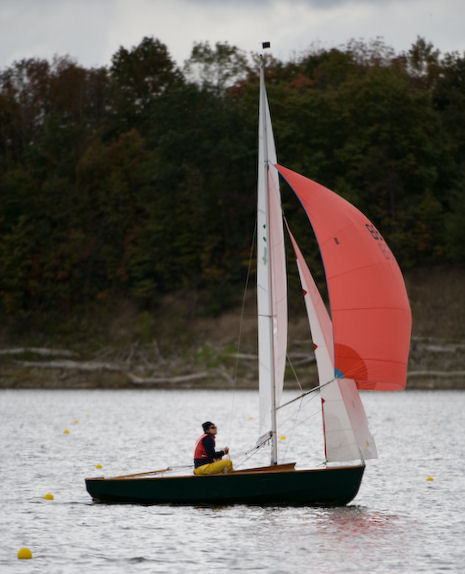 |
| In this area - between the
moorings and Wye Creek - the winds are especially shifty, and Julia needs to pay constant attention to her spi. ... |
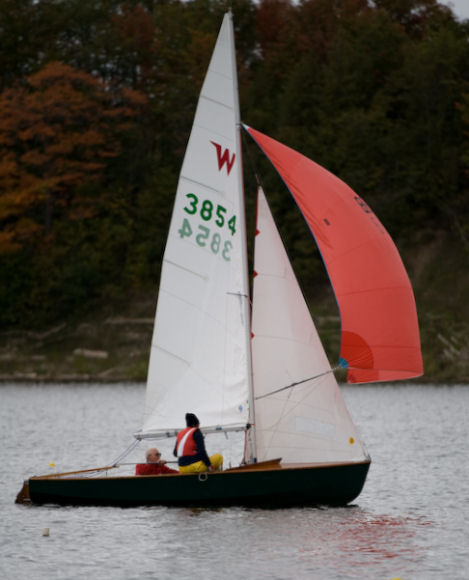 |
| Here she reaches down with her
right hand to bring the pole a bit further aft. ... |
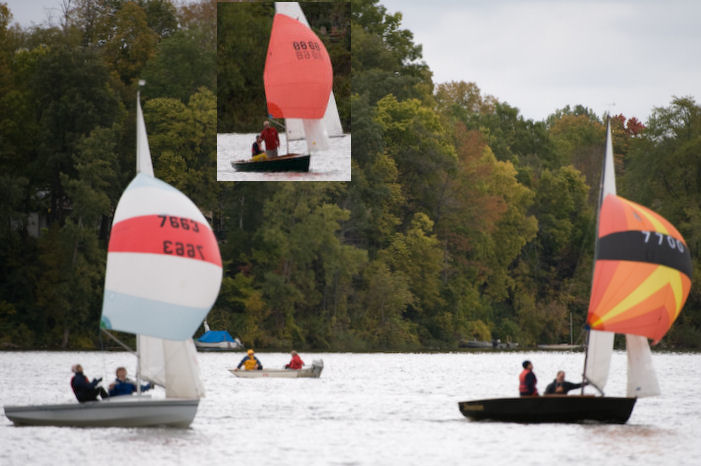 |
|
A close battle for Wayfarer 2nd
between Jens and Roger (7700). Both have their poles a bit far aft. If
you compare with the inset, you can see that the spi foot on 7663 and
7700 is too close to the forestay/jib combination. This, however, is
hard to see from inside the boat. What we do on SHADES is to make sure that the
whole spi is not falling off to leeward of the pole end as it is here
on 7663 and 7700: note how our spi (inset) starts out curving a bit to
windward of the pole end such that the foot and the luff make an angle
of more than 90° to each other. As the pole comes too far aft, that
corner of the spi begins to looked stretched, i.e. trends towards an
angle of less than 90°.
...
|
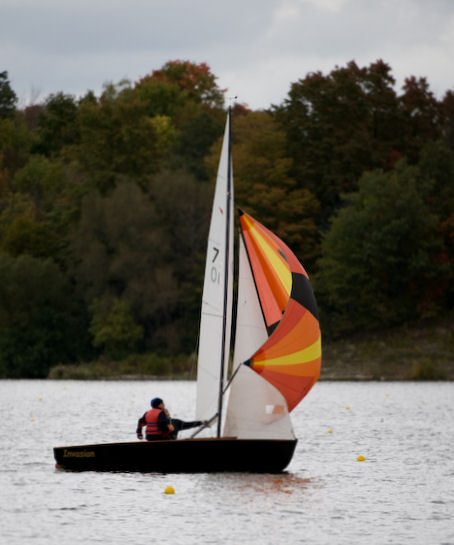 |
| Tricky winds here, as previously
noted. ... |
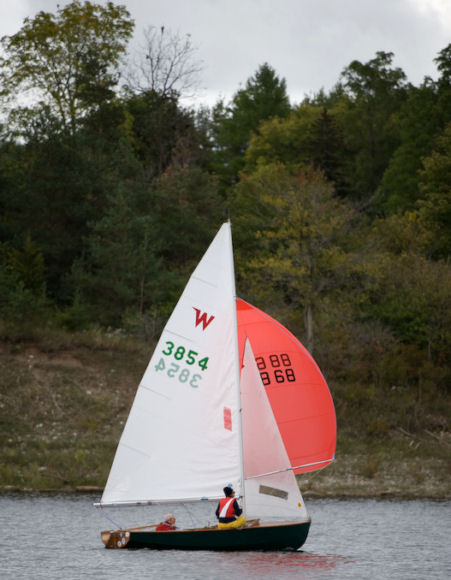 |
| As Julia and Al proceed towards
#2, we can see that the pole is not too far aft just from the angle
made by foot and luff. ... |
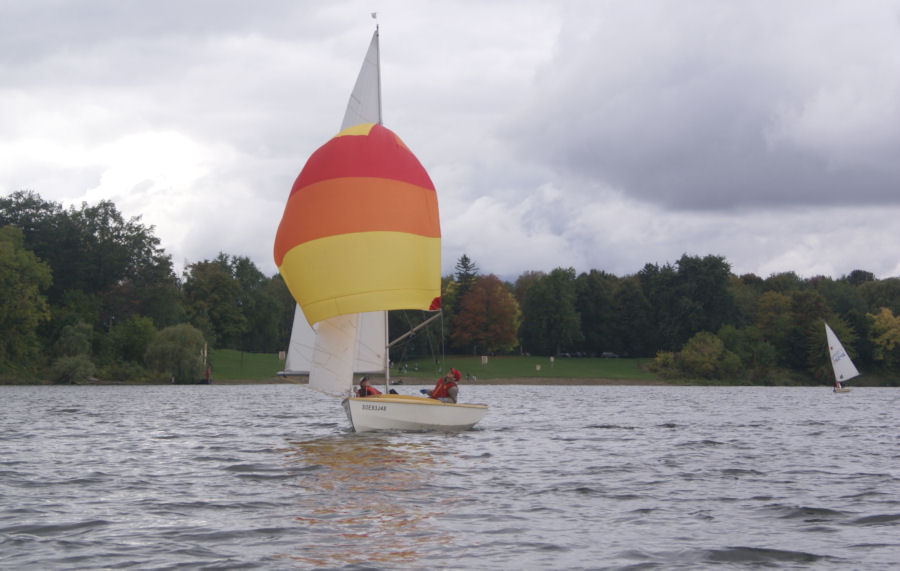 |
| Sue and Steph off the beach near
#4 where the 1812 re-enactment will take place in a short while. |
| next photos page return to 2008 Pumpkin index |